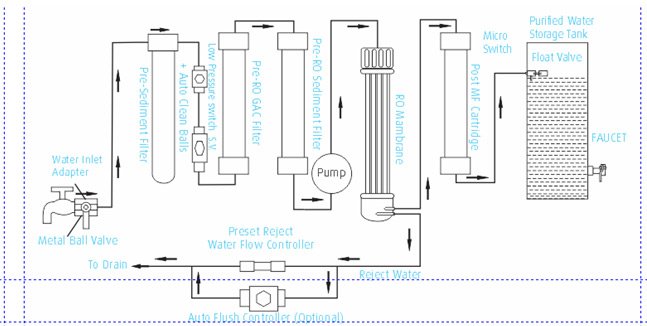Reverse Osmosis Process
Reverse Osmosis process
The Reverse Osmosis process, also known as hyper filtration, is the finest filtration process known till date. The process ensures the removal of particles as small as ions from a solution. Reverse Osmosis uses a semi-permeable membrane to remove salt from portable / brackish water.
In Reverse Osmosis, water pressure applied to the concentrated side forces the process of osmosis into reverse. Under enough pressure, pure water is squeezed through the membrane from the concentrated side to the diluted side. Salts dissolved in water as charged ions are repelled by the R.O. membrane. The rejected impurities on the concentrated side of the membrane are washed away in a stream of waste water and are not accumulated as in a traditional filter.
Uv Process
Ultraviolet Process is a disinfection method that uses ultraviolet (UV) light at sufficiently short wavelength to kill microorganisms. This process utilizes short-wavelength ultraviolet radiation (UV-C) that is harmful to microorganisms. UV-C rays (photons) penetrate micro-organisms and become absorbed by the DNA of the pathogen in the water being treated. The DNA is altered in such a way that the pathogen cannot reproduce, is essentially killed and cannot cause infection.

